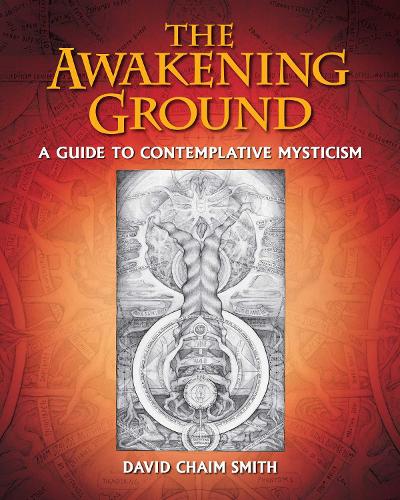
The Awakening Ground: A Guide to Contemplative Mysticism
(Hardback)
Publishing Details
The Awakening Ground: A Guide to Contemplative Mysticism
By (Author) David Chaim Smith
Inner Traditions Bear and Company
Inner Traditions Bear and Company
8th September 2016
United States
Classifications
General
Non Fiction
204.22
Physical Properties
Hardback
208
Width 203mm, Height 254mm, Spine 15mm
848g
Description
Author David Chaim Smith offers a guide to the practice of mystical contemplation from the perspective of a highly unusual form of non-dual Kabbalah, unfettered by both religious mythology and psychological reductionism. The path articulates the ultimate quest for meaning, which seeks to pass through the clutter of the minds conceptual associations to nakedly and directly recognize the innate essentiality of all things known as the light of En (no) Sof (end), or the Infinite. Most mainstream conventional schools of Kabbalah hold such a radical aspiration to be inapproachable at best, and heretical at worst.
The work introduces six stages that articulate how the mind breaks through its own restrictive habitual reflexes to awaken to the ground of En Sof, which is the minds essential nature
Each stage is illustrated by the authors own original works of art and line diagrams
Draws upon obscure sources such as the 13th-century Kabbalistic text Fountain of Wisdom, various alchemical and gnostic texts, and the writings of Isaac the Blind
The author reveals how meaning never remains static--its nature is to move, transmit, and display--yet its precious potential becomes buried under layers of mental constructs. He explains how the minds habits and reflexes impose structures of containment that try to make sense out of phenomena, but these very structures actually obscure their essence completely. Smiths experiential path to gnostic awakening reveals how, in the wake of the lesser concerns of the conceptual mind, primordial purity shines in resonances of vast poetic beauty, if a sensibility of wonder, awe, and delight is cultivated.
Offering a step-by-step analysis to the ecstatic aspects of contemplative revelation, David Chaim Smith explores how to ride the razors edge of the paradox to coax the mind from the sleep of habituation towards the culmination of gnosis. Although the process is described within the traditional symbol system of kabbalah, its import is a truly radical exponent of extreme mysticism.
Reviews
Well, this I would call a must have book. And one I intend to return to in depth. I think most people mainly associate David Chaim Smith with his beautiful and intricate visual cabalistic vistas, but this is something else. Its his own story of awakening to whats behind the scenes of symbol-heavy old texts. Which makes it valid and relevant for a general occult audience too. Information, as we all know, can be ingested ad infinitum, but it serves no purpose (higher or lower) if the process doesnt allow for insights and genuine wisdom to flow through and take hold. Smith calls this awakenings, and thats indeed a very apt term. As usual, his images are incredibly beautiful, and its totally possible to see how his manifestation of them helped him delve deeper/higher on his own path. Thats not saying you have to be a skilled master artist to get any kind of bigger/inner picture, but the devotion certainly helps. You may file this under Cabala and great art, but make sure you actually use it in inspirational ways--whichever tradition youre coming from. * Carl Abrahamsson, filmmaker, musician, author, publisher of Fenris Wolf *
Author Bio
David Chaim Smith was born in 1964 in Queens, New York. His early career was as a visual artist throughout the 1980s. In 1990 he began an immersion into the root sources of Alchemy and the Hermetic and Hebrew traditions of the Kabbalah. In 1996 he abandoned visual art for a total dedication to spiritual practice, from which came a unique blend of practical mysticism and creative innovation. This blend coalesced while working with an obscure thirteenth-century text called The Fountain of Wisdom, which he mapped out diagrammatically in notebooks during his ten-year hiatus from visual art. The resulting symbol vocabulary served as the basis for his 2006 return to art, generating the content for several books. He currently lives in the suburbs of New York City with his wife, Rachel.
